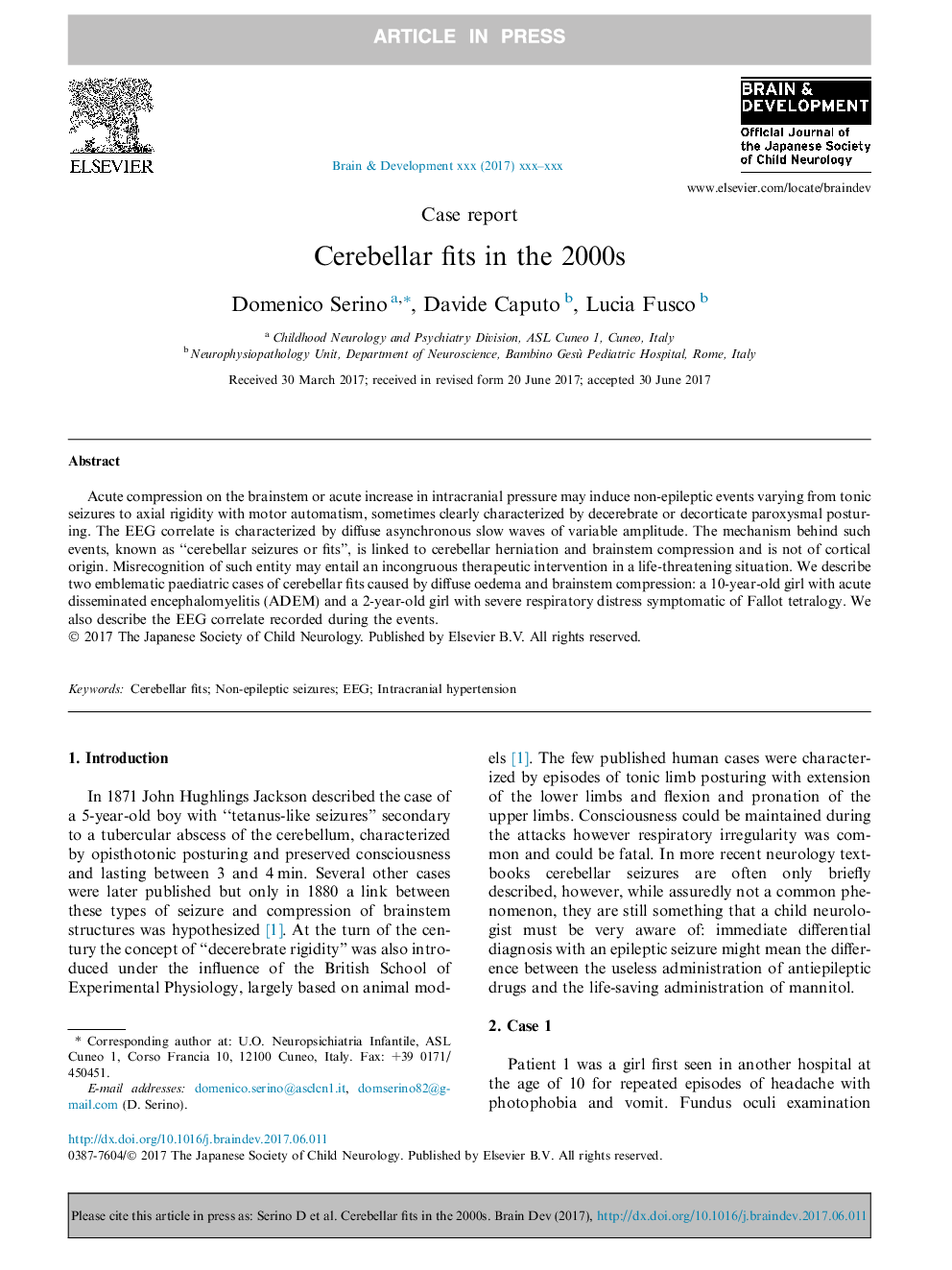| Article ID | Journal | Published Year | Pages | File Type |
|---|---|---|---|---|
| 8681319 | Brain and Development | 2018 | 4 Pages |
Abstract
Acute compression on the brainstem or acute increase in intracranial pressure may induce non-epileptic events varying from tonic seizures to axial rigidity with motor automatism, sometimes clearly characterized by decerebrate or decorticate paroxysmal posturing. The EEG correlate is characterized by diffuse asynchronous slow waves of variable amplitude. The mechanism behind such events, known as “cerebellar seizures or fits”, is linked to cerebellar herniation and brainstem compression and is not of cortical origin. Misrecognition of such entity may entail an incongruous therapeutic intervention in a life-threatening situation. We describe two emblematic paediatric cases of cerebellar fits caused by diffuse oedema and brainstem compression: a 10-year-old girl with acute disseminated encephalomyelitis (ADEM) and a 2-year-old girl with severe respiratory distress symptomatic of Fallot tetralogy. We also describe the EEG correlate recorded during the events.
Related Topics
Life Sciences
Neuroscience
Developmental Neuroscience
Authors
Domenico Serino, Davide Caputo, Lucia Fusco,
